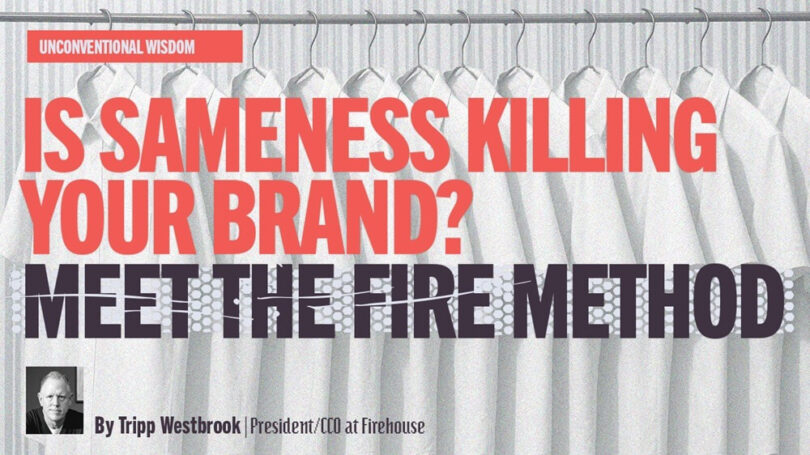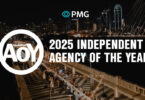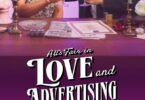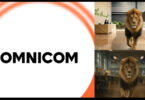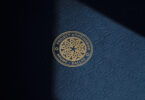Conventional marketers are spending three times as much just to keep up with the rule-breakers.
I often say that advertising is some of the most expensive wallpaper ever created. The whole point of marketing your brand is to gain attention and separate yourself from your competitive set. Sadly, too many brands and marketers fall right into the tropes and traps of their categories and camouflage themselves in a sea of sameness.
Old habits are hard to break, I get it. Sticking to what’s familiar feels safe. But when it comes to differentiation, playing it safe and following the rules is the riskiest thing you can do.
Every category has its unwritten rules, or conventions, that permeate the messaging consumers see every day. Some of these conventions are there for a reason, sure. But most are self-imposed roadblocks that cause brands to spend a ton of money for, at best, incremental gains.
A recent 25-year study by the Institute of Practitioners of Advertising showed that marketers employing conventional thinking and tactics had to spend nearly three times as much to achieve the same results as unconventional “rule breakers”. The more commoditized your industry, the worse it gets.
The Three Convention Types
Let’s identify the three main types.
1. Visual Conventions
These include similarities in imagery, color palettes, typefaces, and logo treatments. Brands fall into these tropes through lack of imagination, borrowed legitimacy, or “me too” familiarity. This causes the most brand confusion and lack of differentiation.

Six different brands, one basic look.
2. Verbal Conventions
These show up in a brand’s messaging, language, tone of voice, and storytelling style. Where visual conventions confuse consumers, verbal conventions cause them to tune out.

How not to “future-proof” your higher education brand.
3. Behavioral Conventions
These are the assumed ways a category shows up and goes to market. They range from expected media patterns and customer interactions to distribution models and packaging materials. A simple change in any of these patterns can be disruptive, distinctive and create tremendous momentum and affinity with consumers.
The FIRE Method
Being unconventional across the full funnel is the key to growth in very crowded categories. The FIRE method is a systematic approach to breaking conventions and making sure people will notice your brand:
Find the Norms
This is where you roll up your sleeves and dig in. Pin your category’s work up on the wall and start looking for patterns. Figure out which conventions your brand is following and ask why. Are the rules you’re seeing driven by consumer needs, or are they just category habits?
Identify Opportunities for Friction
Look at how people are forced to interact with your category and ask: how would they rather interact with it? Are there cultural trends or perceptions you can lean into or push off of? Identify your enemy, whether it’s a competitor, a consumer mindset, or a category blind spot. Be the itch that needs scratching.
Reimagine Brand Behaviors
Identify an opportunity to regularly engage customers in an unexpected way. Prioritize the places where change can have the most impact, whether cultural, operational, or something else entirely. This means aligning your brand experience so consumers can see and feel the change. It’s where the rubber meets the road.
Execute with Commitment
Get your organization bought in and excited. Half-measures become very expensive mush. If you’re committed to being unconventional, do it. Be brave. Don’t blink.
Why Unconventional Wins
Employing “safe” and conventional marketing in the name of ROI stunts the growth potential of your business. But being unconventional has a multifaceted positive impact:
- It drives brand preference. The more interesting you are, the more people will like you. Multiple studies have correlated brand preference with increases in both cash flow and market share.
- It commands premium pricing power. An analysis of 220 consumer products by The Marketing Science Institute found that marketing-driven preference drives price premiums of 26% on average, even when product quality was the same.
- It creates customer loyalty. A Millward Brown study concluded that strong brands capture more sales, engender greater loyalty, and even recover more quickly following a crisis or downturn.
Final Takeaway
Ask yourself a hard question: if any of your competitors swapped logos on your advertising, would anyone notice? More importantly, would anyone really care? If you can’t immediately and emphatically say “yes” to both, then it’s time to get real and stop wasting time and money. Being bold and different isn’t a risky business move. It’s an imperative for brand growth and perhaps even survival.




